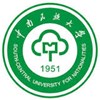South-Central University for Nationalities, also known as South-Central Minzu University, is a well-regarded national public university located in Wuhan, Hubei Province, China.
In 1951, amidst the early years of the People's Republic of China, a significant institution emerged – a university dedicated to fostering education for the country's diverse ethnic minorities. This university, which would later become a prominent national institute, began its journey as the South-Central Institute for Nationalities. Established as part of a network of six such national universities, it operated under the guidance of the National Ethnic Affairs Commission. The early years were marked by a focus on providing educational opportunities for students from various ethnic backgrounds. The curriculum likely emphasized cultural preservation, language studies specific to minority groups, and core subjects that would equip graduates to contribute to their communities. As the university matured, it evolved into a comprehensive institution, expanding its academic offerings to encompass a wider range of disciplines. This transformation reflected China's changing needs and the university's commitment to providing well-rounded education for its students.
Throughout its history, the university has undoubtedly witnessed significant milestones. Perhaps it received national recognition for its excellence in specific fields, or maybe it played a pivotal role in developing educational resources for minority languages. It's also possible that the university saw a surge in international collaborations or student exchange programs, fostering cultural understanding beyond national borders. Looking back, the university's history is likely interwoven with the broader social and political landscape of China. It has likely adapted and grown alongside the nation, constantly striving to provide relevant and impactful education for its students. The challenges it faced, the triumphs it achieved, and the transformations it underwent all contribute to the rich narrative of this esteemed university.
Beyond academics, the university fosters a vibrant campus life. Imagine a place where students from various ethnicities come together, celebrating their unique cultures and traditions. This creates a rich tapestry of experiences, promoting understanding and tolerance. The campus likely bustles with cultural events, traditional performances, and opportunities for students to share their heritages. The university's motto, if it follows the tradition of many institutions, might encapsulate its core values. It could emphasize ideals like inclusivity, academic excellence, and the pursuit of knowledge for the betterment of society, particularly for the ethnic minority communities it serves. Looking forward, this university is likely determined to stay at the forefront of higher education for ethnic minorities. It aspires to continuously improve its curriculum, expand research opportunities, and cultivate future generations of well-rounded graduates who can contribute meaningfully to their communities and China as a whole. Perhaps it also envisions itself as a bridge between ethnic groups, fostering national unity and cultural exchange.


